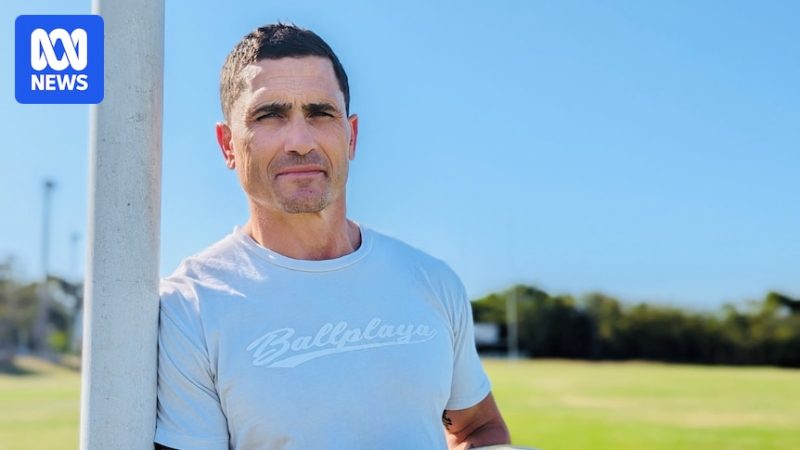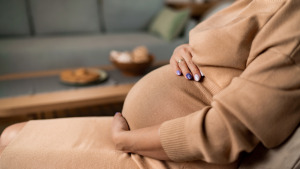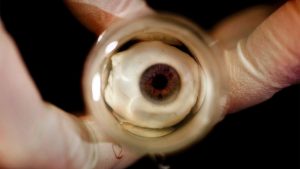Former NRL star PJ Marsh backs call for mandatory concussion training

Watching PJ Marsh full of pride as he passes a football with his teenage sons, it’s hard to believe he didn’t want them playing the game he loved.
Serious injuries and head knocks forced the former NRL player to hang up his boots earlier than he’d planned.
“Not being the biggest guy in a big man’s game … it took its toll,” Marsh said.
Marsh helped the Parramatta Eels beat North Queensland Cowboys in 2007. (AAP/Action Photographics: Colin Whelan)
Scars from four knee operations, metal discs in his back and fusions to relieve excruciating pain from a broken neck ultimately forced Marsh to be medically retired after more than 150 matches in the NRL.
Then there were the concussions that rocked the Queensland State of Origin, Eels, Warriors and Broncos hooker.
“I can’t remember the exact year, but it was at Shark Park, and I woke up in the dressing sheds,” Marsh said.
“It was quite serious, and I still don’t remember too much at all.”
Marsh wants young footballers and parents to be aware of the long-term consequences. (ABC Capricornia: Aaron Kelly)
Now 44, Marsh lives in Yeppoon on the central Queensland coast and works in the coal mines to the west.
He has joined calls from Concussion Australia to make annual concussion education mandatory.
Chief executive Brendan Swan said the education should be delivered independently of sporting bodies and should apply to coaches, players under 25, parents of participants under 18, first aid officials and sports club officials for high-risk sports.
Brendan Swan says better education is needed for players and parents. (ABC News: Nickoles Coleman)
The federal government earlier this month responded to a Senate inquiry into concussion in sport.
It agreed with a recommendation to improve community awareness and education strategies, with tailored resources for different groups such as players and coaches.
Mr Swan welcomed the support but said the government’s response was conservative and lacked detail.
A spokesperson for Federal Sport Minister Anika Wells said the government prioritised the health and safety of all players and was continuing to advance research on sport-related concussion.
Marsh trains with his oldest son Braelan, who is contracted to NRL club the Dolphins. (ABC Capricornia: Russel Talbot)
‘He didn’t want us playing footy’
Marsh remains in tip-top shape, but every day is a struggle — physically and mentally.
Symptoms linked to chronic traumatic encephalopathy (CTE) are in the back of his mind.
“[Doctors] always talk about memory loss and my mood is sometimes up and down but obviously I’ve come to a place where I can understand it and manage [the symptoms] by going to the gym and exercising,” he said.
“When you’re a professional sportsman, it’s difficult to tell people because it’s your life.”
Marsh’s sons Jay and Braelan have inspired him to get back involved in rugby league. (ABC Capricornia: Aaron Kelly)
CTE is a degenerative brain disease likely caused by repeated head injuries.
It cannot be diagnosed until after death, but signs of cognitive decline or degenerative brain issues can be seen long before that.
Marsh did not originally want his own sons, Braelan, 18, and Jay, 15, following in his footsteps because of the risk to their bodies.
The Marsh family home in Yeppoon is lined with milestone moments on the footy field. (ABC Capricornia: Aaron Kelly)
“Dad pretty much signed us up for tennis, golf, everything because with his injuries and stuff he didn’t want us playing footy,” said Braelan, who is contracted to NRL club the Dolphins.
But in the years since Marsh said goodbye to the game, the protocols of concussions and their long-term effects have improved from the elite to grassroots level.
“We’re finding out a lot more about concussions these days and how serious it is,” he said.
Marsh was stretchered off the field during a match in Sydney in 2005. (AAP/Action Photographics: Robb Cox)
‘Biggest threat to contact sports’
Rob Crow is a former long-time rugby league administrator with the Queensland Rugby League (QRL), which took part in the Senate inquiry into head injuries.
Crow said grassroots amateur footballers were protected now more than ever.
“There’s certainly more protocols in place around safety, especially of the juniors now, which is really important,” he said.
Crow said players 18 years and younger were stood down for 19 days due to concussion while players over the age of 19 were sidelined for 11 days.
Rob Crow says concussion needs to be taken seriously. (ABC Capricornia: Russel Talbot)
Under the regulations, they can only return after all symptoms have resolved and the player has been cleared to play by a medical professional.
“Concussion is the biggest threat to contact sports in Australia whether people like it or not.”
Crow said he often thought about former teammates he played alongside during an era of country football when it was a badge of honour to keep playing after being knocked out.
“You hopped up and shook your head and got back into it,” he said.
Marsh says his family have been his strength following his retirement from rugby. (ABC Capricornia: Aaron Kelly)
While Marsh’s body and brain will never be the same, he said he had also grappled with his mental health since retirement — something he believed could be linked to CTE.
“When you’re young, you’re bulletproof,” he said.
“Young people need to understand the seriousness of concussion, the seriousness of injuries, the seriousness of mental health and self-care.”








